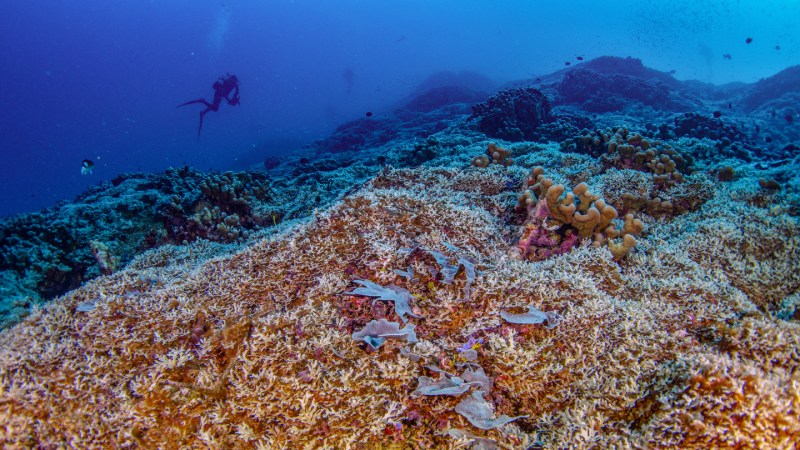Off the coast of the Solomon Islands lurks a centuries-old being that is so immense, it can be seen from space.
Discovered in October by the National Geographic Society’s Pristine Seas team, it is the world’s largest standalone coral. Coming in at roughly 34 meters wide, 32 meters long and 6 meters tall, the behemoth coral is longer than the average blue whale. It also dwarfs the world’s next largest-known coral, a 22-meter-wide coral in American Samoa known as Big Momma.
“While Big Momma looked like a huge scoop of ice cream plopped down on the reef, this newly discovered coral is as if the ice cream started to melt, spreading forever along the seafloor,” said Molly Timmers, a marine ecologist on the Pristine Seas team, in a statement.
The immense specimen is a shoulder-blade coral — so named for the scapula-like ridges that comprise its body — called Pavona clavus. The team estimates that it was constructed by nearly a billion stony coral polyps, tiny creatures that live together and build rigid skeletons made of calcium carbonate (SN: 10/30/24).
Such living structures provide crucial habitat for many marine species, said coral scientist Eric Brown of the Pristine Seas team, during a news conference. “Coral reef ecosystems comprise only about 0.2 percent of the ocean’s area, yet they contain over 25 percent of the marine species on the planet.”
Serendipitously, underwater cinematographer Manu San Félix came across the giant coral the night before the Pristine Seas team had planned to leave the location. “In the first second, I realized that I was looking at something unique,” he said. “I was saying to myself, ‘no, no, it’s not that big,’ because I [didn’t] want to [cause] too much excitement before it was measured.”
After measuring the coral’s record-breaking dimensions and reviewing studies of the species’ growth rate, the team estimated that it was 300 to 500 years old. That longevity could be a boon to researchers, as the composition of a coral skeleton records information about its environmental conditions.
While the newfound coral appears healthy, coral reefs around the world face many threats, from ocean acidification to pollution to coral bleaching (SN: 1/9/15; SN: 9/7/22; SN: 4/29/24). According to Brown, the discovery is a reminder that “it’s important for us to do whatever we can to protect these environments that are both small, yet mighty.”


